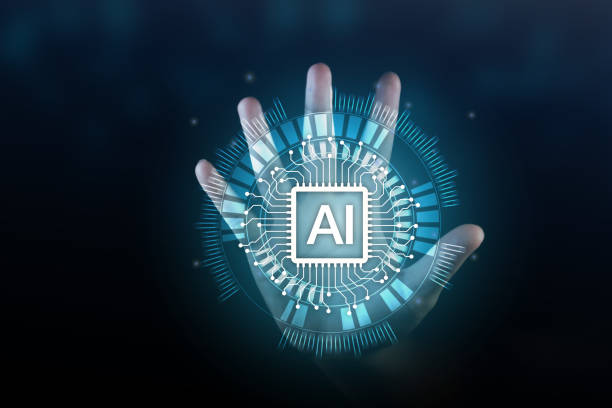What is Artificial Intelligence? Definitions and Basic Concepts
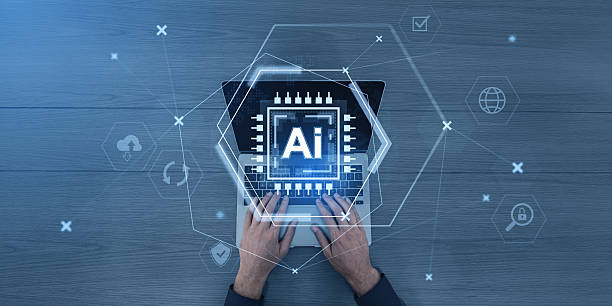
#Artificial_Intelligence (AI) is a branch of computer science that deals with building machines capable of performing tasks that typically require human intelligence.
These tasks include learning, problem-solving, pattern recognition, natural language understanding, and decision-making.
Artificial intelligence strives to create systems that can perform various tasks automatically and without direct human intervention by simulating human thought processes.
Various definitions have been provided for artificial intelligence, but a comprehensive definition describes it as “the ability of a system to reason, learn, and act autonomously.”
Artificial intelligence is a broad field that includes numerous sub-branches such as Machine Learning, Natural Language Processing, Computer Vision, and Robotics.
Each of these sub-branches addresses specific aspects of artificial intelligence, aiming to create systems that can perform at a level similar to or better than humans in their respective fields.
Artificial intelligence is broadly divided into two categories: Narrow AI and General AI.
Narrow AI focuses on performing specific and limited tasks and excels in this area.
For example, face recognition systems or machine translation are examples of Narrow AI.
In contrast, General AI aims to create systems capable of performing any task a human can do.
General AI is still in the research and development stages and has not yet been fully realized.
Does your current e-commerce website not generate the expected sales for you?
Rasaw Web is an expert in professional e-commerce website design!
✅ An attractive and user-friendly website aimed at increasing sales
✅ High speed and security for an ideal shopping experience⚡ Get a free consultation for online store design with Rasaw Web!
The History of Artificial Intelligence from Beginning to Today
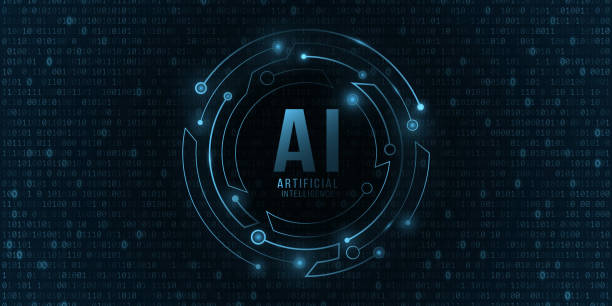
The history of #Artificial_Intelligence dates back to the 1950s when scientists and researchers first thought about building machines that could think like humans.
In 1956, a conference was held at Dartmouth College, which is considered a turning point in the history of artificial intelligence.
At this conference, the term “artificial intelligence” was officially introduced, and the goals and challenges of this field were defined.
In the 1960s and 1970s, significant progress was made in artificial intelligence.
Systems for solving mathematical problems, playing chess, and understanding natural language were developed.
However, hardware and software limitations at the time hindered further progress in AI.
In the 1980s and 1990s, with the emergence of more powerful computers and new algorithms, artificial intelligence regained attention.
Machine learning and neural networks were used as primary methods in developing AI systems.
In the 21st century, #Artificial_Intelligence rapidly advanced and found applications in various fields.
The emergence of Big Data and Deep Learning algorithms allowed AI systems to perform much better than before.
Today, artificial intelligence is used in self-driving cars, face recognition systems, voice assistants, industrial robots, and many other areas, playing an important role in our lives.
This path continues, and it is predicted that artificial intelligence will play an even larger role in human lives in the future.
Applications of Artificial Intelligence in Various Industries
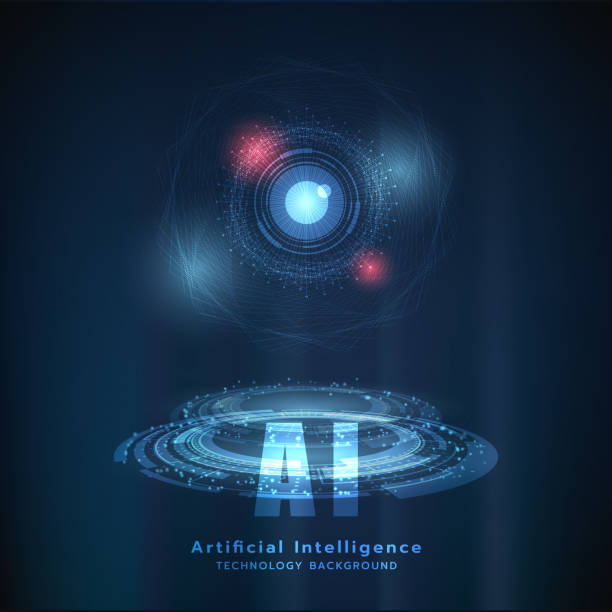
The applications of #Artificial_Intelligence in various industries are vast and diverse.
In the medical industry, AI is used for disease diagnosis, analysis of medical images, and the development of new drugs.
AI systems can accurately analyze medical images such as MRI and CT Scans and detect diseases in their early stages.
Additionally, AI is used in robotic surgeries, helping surgeons perform operations with greater precision.
In the manufacturing industry, #Artificial_Intelligence is used for optimizing production processes, quality control, and predicting equipment failures.
AI systems can identify problems and defects by analyzing production data and provide solutions for improving processes.
Also, AI is used in industrial robots, helping them perform their tasks with greater accuracy and speed.
In the financial industry, #Artificial_Intelligence is used for fraud detection, risk management, and providing personalized financial services.
AI systems can identify suspicious patterns by analyzing financial data and prevent fraud.
Additionally, AI can help customers make better financial decisions and optimize their investments.
Besides these industries, #Artificial_Intelligence has numerous applications in other areas such as education, transportation, agriculture, and security, helping to improve the performance and efficiency of these industries.
| Industry | AI Application |
|---|---|
| Medicine | Disease diagnosis, drug development |
| Manufacturing | Process optimization, quality control |
| Finance | Fraud detection, risk management |
Machine Learning and Its Role in Artificial Intelligence

Machine Learning is one of the most important sub-branches of #Artificial_Intelligence that enables machines to learn from data and improve their performance without explicit programming.
In fact, instead of writing complex programs to solve problems, machine learning teaches machines to discover patterns and relationships in data themselves and make decisions based on them.
Machine learning algorithms are divided into various types, including Supervised Learning, Unsupervised Learning, and Reinforcement Learning.
In supervised learning, the machine is trained using labeled data.
This means that data is provided along with correct answers, and the machine tries to find a relationship between the data and the answers.
In unsupervised learning, the machine is trained using unlabeled data and tries to discover patterns and structures within the data.
In reinforcement learning, the machine learns how to act in a specific environment to maximize rewards by trial and error and receiving rewards or penalties.
Machine learning plays a crucial role in the development of #Artificial_Intelligence systems.
Many AI systems, such as face recognition systems, machine translation, and self-driving cars, use machine learning algorithms to improve their performance.
With the advancement of machine learning algorithms and the increasing volume of available data, AI systems are becoming more powerful and efficient day by day.
Are you losing business opportunities because of an outdated website? With Rasaw Web, permanently solve the problem of not attracting potential customers through your website!
✅ Attract more high-quality leads
✅ Increase brand credibility in the eyes of customers
⚡ Get a free consultation for corporate website design
Natural Language Processing and Speech Understanding
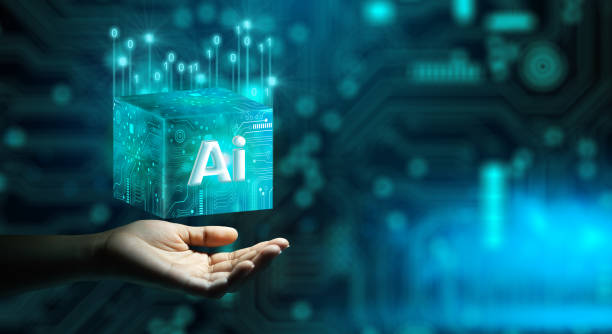
Natural Language Processing (NLP) is a branch of #Artificial_Intelligence that enables machines to understand, analyze, and generate human language.
The main goal of natural language processing is to create systems that can communicate with humans in natural language and automatically extract information from texts and speech.
Natural language processing includes a set of techniques and algorithms used to analyze the structure and meaning of language.
These techniques include Parsing, Semantic Analysis, Named Entity Recognition, and Sentiment Analysis.
Using these techniques, machines can analyze texts and speech and extract important information from them.
Speech understanding is one of the most important applications of natural language processing.
Speech understanding systems can convert human speech into text and extract information from speech.
These systems are used in various fields such as voice assistants, automated answering systems, and simultaneous translation systems.
With the advancement of natural language processing algorithms, speech understanding systems are becoming more accurate and efficient day by day and can communicate with humans more naturally and effectively.
Computer Vision and Image Recognition

Computer Vision is a branch of #Artificial_Intelligence that enables machines to understand images and videos and extract information from them.
The main goal of computer vision is to create systems that can see, analyze, and understand like humans.
Computer vision includes a set of techniques and algorithms used for processing images and videos.
These techniques include Object Detection, Face Recognition, Motion Detection, and Pattern Recognition.
Using these techniques, machines can analyze images and videos and extract important information from them.
Image recognition is one of the most important applications of computer vision.
Image recognition systems can detect various objects, people, and scenes in images and videos.
These systems are used in various fields such as self-driving cars, security systems, and medical systems.
With the advancement of computer vision algorithms, image recognition systems are becoming more accurate and efficient day by day and can help humans in many areas.
Challenges and Limitations of Artificial Intelligence

Despite significant progress in the field of #Artificial_Intelligence, there are still many challenges and limitations that need to be overcome.
One of the most important challenges is the lack of labeled data.
Many machine learning algorithms require labeled data to be properly trained.
However, collecting and labeling data can be time-consuming and costly.
Another challenge is the interpretability of #Artificial_Intelligence systems.
Many deep learning algorithms, such as deep neural networks, are known as “black boxes” because it is difficult to understand how these algorithms arrive at decisions.
This can create problems in fields such as medicine and law, where the reasons for AI system decisions need to be explainable.
Also, there are concerns about the impact of #Artificial_Intelligence on employment and privacy.
With the advancement of AI systems, many jobs may be automated and disappear.
Additionally, AI systems can collect and analyze individuals’ personal information, which can lead to privacy violations.
To address these challenges, it is necessary to establish appropriate laws and regulations for governing the use of #Artificial_Intelligence and prevent its negative impacts on society.
| Challenge | Description |
|---|---|
| Data Scarcity | Need for labeled data |
| Interpretability | Difficulty in understanding system decisions |
| Impact on Employment | Potential for job automation |
| Privacy | Collection and analysis of personal information |
The Future of Artificial Intelligence and Its Impact on Society
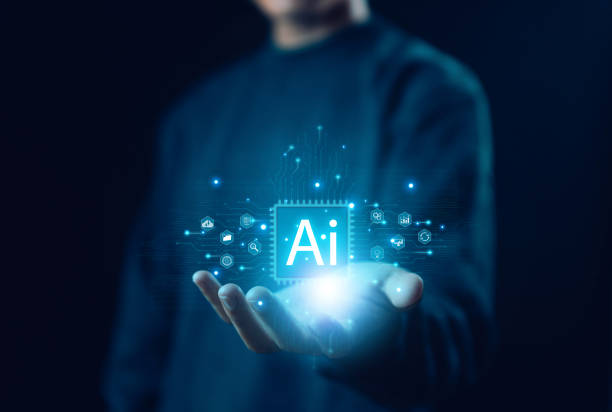
The future of #Artificial_Intelligence is very bright and full of new opportunities.
With technological advancements, AI systems are becoming more powerful and efficient day by day and finding applications in various fields.
It is predicted that artificial intelligence will play a much larger role in human lives in the future and bring about immense transformations in society.
One of the most important impacts of #Artificial_Intelligence on society is the automation of many tasks and processes.
Automation increases efficiency and productivity, allowing humans to devote their time and energy to more creative and valuable activities.
Additionally, AI can help solve many complex problems and global challenges, such as climate change, chronic diseases, and poverty.
However, it should be noted that #Artificial_Intelligence also comes with challenges and risks.
For example, automation can lead to job losses and create a need for changes in the education system and labor market.
Also, misuse and abuse of #Artificial_Intelligence must be prevented, and appropriate laws and regulations must be established to govern its use.
With proper and responsible management, the benefits of #Artificial_Intelligence can be realized, and its dangers avoided.
Disappointed with your e-commerce site’s low conversion rate? Rasaw Web transforms your e-commerce site into a powerful tool for attracting and converting customers!
✅ Significant increase in visitor-to-buyer conversion rate
✅ Unrivaled user experience for increased customer satisfaction and loyalty⚡ Get a free consultation from Rasaw Web!
Ethics in Artificial Intelligence
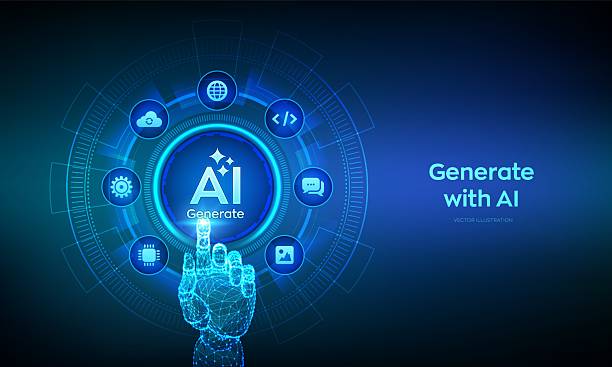
Ethics in #Artificial_Intelligence is a crucial topic that gains more importance with the rapid advancement of this technology.
Ethical issues in artificial intelligence involve how AI systems are designed, developed, and used in a way that aligns with society’s values and ethical principles.
One of the most important ethical issues in #Artificial_Intelligence is the problem of bias.
AI systems can inadvertently be discriminatory if the data used to train them is biased.
For example, face recognition systems may be less accurate in recognizing faces of individuals with darker skin tones if their training data predominantly includes images of individuals with lighter skin tones.
Another issue is accountability.
If an #Artificial_Intelligence system makes a wrong decision that leads to damage, who is responsible? Is the developer, the user, or the #Artificial_Intelligence system itself responsible? Answering these questions requires careful consideration and the establishment of appropriate laws and regulations.
Furthermore, transparency and explainability are also important ethical issues in #Artificial_Intelligence.
#Artificial_Intelligence systems need to be designed in a way that their decision-making process can be understood, and their misuse can be prevented.
To address ethical challenges in #Artificial_Intelligence, developers, policymakers, and society as a whole need to collaborate to uphold ethical principles and values in the development and use of #Artificial_Intelligence.
How to Learn Artificial Intelligence?

Learning #Artificial_Intelligence can be an engaging and rewarding process, but it requires effort and perseverance.
To begin learning artificial intelligence, you should first become familiar with the basic concepts of mathematics, statistics, and computer science.
Concepts such as linear algebra, calculus, probability, and statistics are essential for understanding machine learning algorithms.
After familiarizing yourself with the basic concepts, you can move on to learning the programming languages used in #Artificial_Intelligence.
Python is one of the most popular programming languages for #Artificial_Intelligence, as it has powerful libraries such as NumPy, Pandas, Scikit-learn, and TensorFlow, which are very useful for developing #Artificial_Intelligence systems.
After learning a programming language, you can proceed to learn machine learning algorithms.
Many educational resources are available for learning machine learning algorithms, including online courses, books, and scientific articles.
Some reputable online courses in machine learning include courses from Coursera, edX, and Udacity.
Additionally, many books in this field can help you learn machine learning concepts and algorithms.
Through practice and hands-on projects, you can strengthen your skills in #Artificial_Intelligence and prepare to enter this field.
Frequently Asked Questions
| Question | Answer |
|---|---|
| 1. What is Artificial Intelligence (AI)? | It is a branch of computer science that aims to create machines capable of simulating human intelligence and performing tasks that require human thinking, such as learning, problem-solving, and decision-making. |
| 2. What are the main types of Artificial Intelligence? | They can be classified into Narrow AI, which focuses on a specific task, General AI, which possesses comprehensive human-like capabilities, and Super AI, which surpasses human intelligence. |
| 3. Mention some common applications of Artificial Intelligence in our daily lives. | These include voice assistants (like Siri and Alexa), recommendation systems (like Netflix and Amazon), self-driving cars, facial recognition systems, and spam filters. |
| 4. What is the difference between Artificial Intelligence and Machine Learning? | Artificial Intelligence is the broader concept of creating intelligent machines, while Machine Learning is a subset of AI that focuses on enabling systems to learn from data without explicit programming. |
| 5. What is Deep Learning? | It is a subset of Machine Learning that uses multi-layered artificial neural networks (deep neural networks) to process data and discover complex patterns, used in image and speech recognition. |
| 6. What are the main benefits of Artificial Intelligence? | Improved efficiency and productivity, automation of repetitive tasks, better decision-making based on big data analysis, and the development of solutions for complex problems in fields such as medicine and science. |
| 7. What are the main challenges facing the development and deployment of Artificial Intelligence? | These include the need for vast amounts of high-quality data, privacy and security issues, bias in data and algorithms, and high development and maintenance costs. |
| 8. Does Artificial Intelligence raise ethical or social concerns? | Yes, it raises concerns related to privacy, algorithmic bias, job displacement due to automation, accountability for errors made by intelligent systems, and the need for a regulatory framework. |
| 9. How can Artificial Intelligence affect the future of the job market? | It can lead to the automation of some routine jobs, but it will also create new jobs requiring advanced skills in developing, operating, and maintaining AI systems. |
| 10. What are some modern or promising technologies in the field of Artificial Intelligence? | These include advanced Natural Language Processing (NLP) (such as large language models like ChatGPT), computer vision, robotics, and Generative AI. |
And other services of Rasaw Web Advertising Agency in the field of advertising
- Smart Website Development: A professional solution for improving SEO ranking with a focus on Google Ads management.
- Smart Direct Marketing: An effective tool for campaign management with the help of custom programming.
- Smart Website Development: A specialized service for increasing click-through rates based on marketing automation.
- Smart Conversion Rate Optimization: A specialized service for increasing website traffic based on custom programming.
- Smart Marketing Automation: A professional solution for increasing website traffic with a focus on customizing user experience.
And hundreds of other services in the field of internet advertising, advertising consultation, and organizational solutions
Internet Advertising | Advertising Strategy | Advertorial
Resources
Artificial Intelligence in Data Analysis Service
The Role of Analytical Artificial Intelligence in Industrial Development
The Future of Artificial Intelligence and Upcoming Transformations
Applications of Analytical Artificial Intelligence in Crisis Management
? To boost your business in the digital world, count on the expertise of “Rasaw Afarin”! By offering comprehensive digital marketing services, including multilingual website design, we help you have a powerful and influential online presence.
📍 Tehran, Mirdamad Street, next to Bank Markazi, Kazerun Jonubi Alley, Ramin Alley, No. 6


